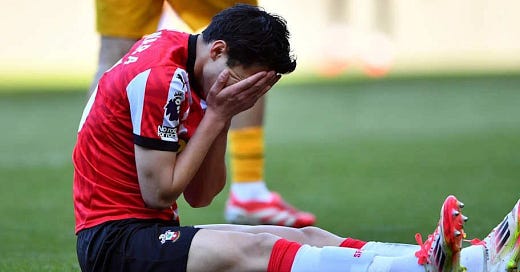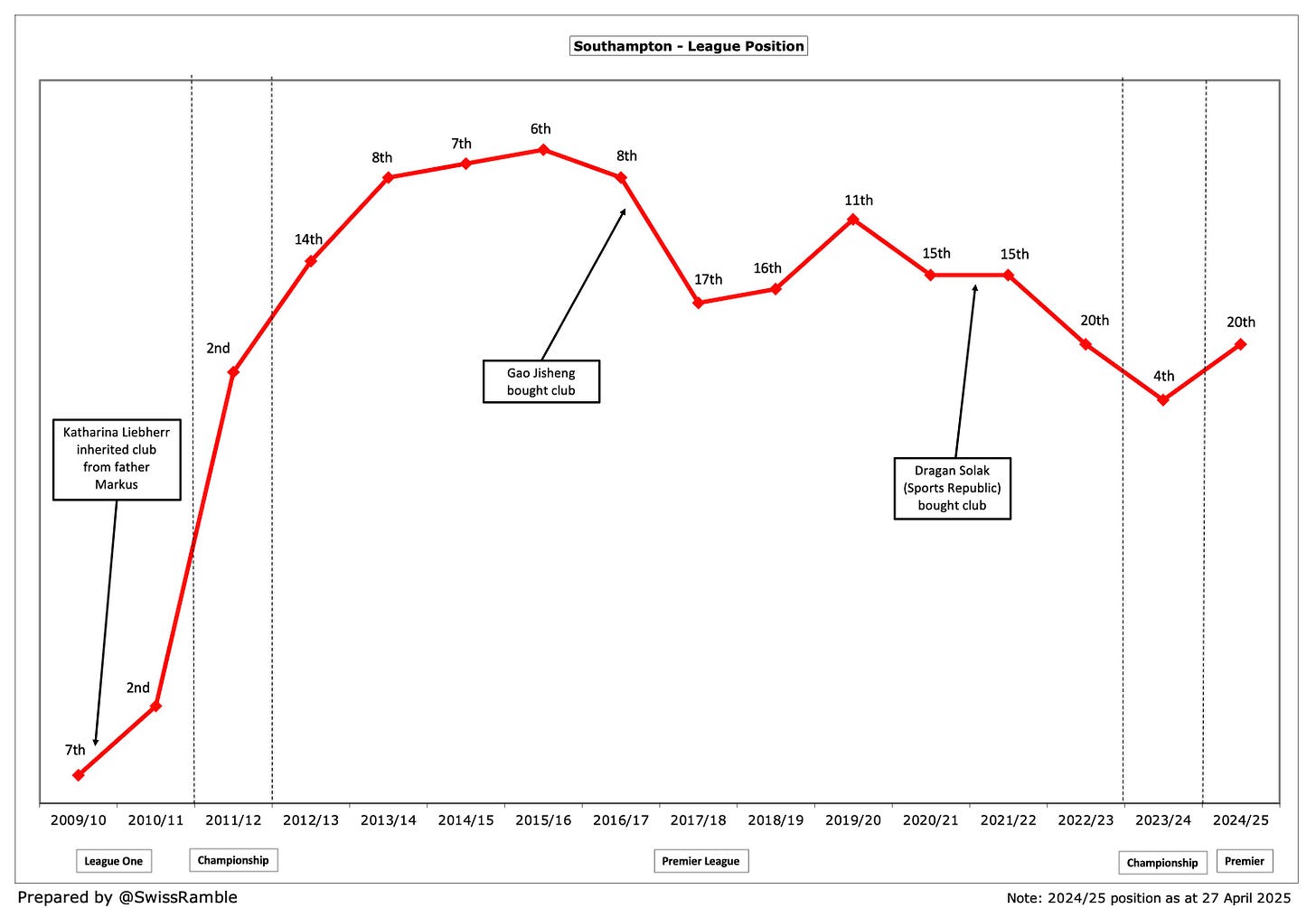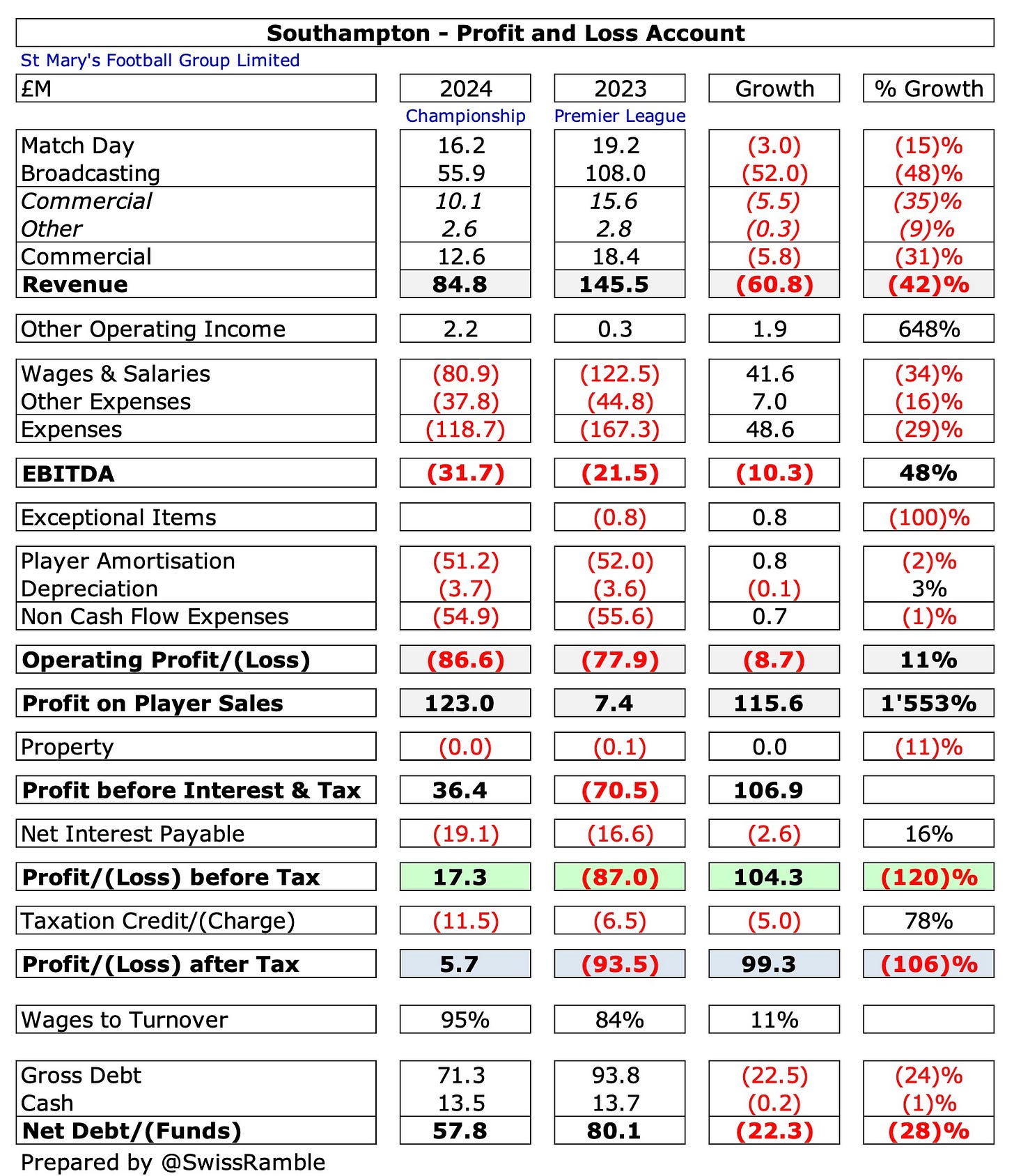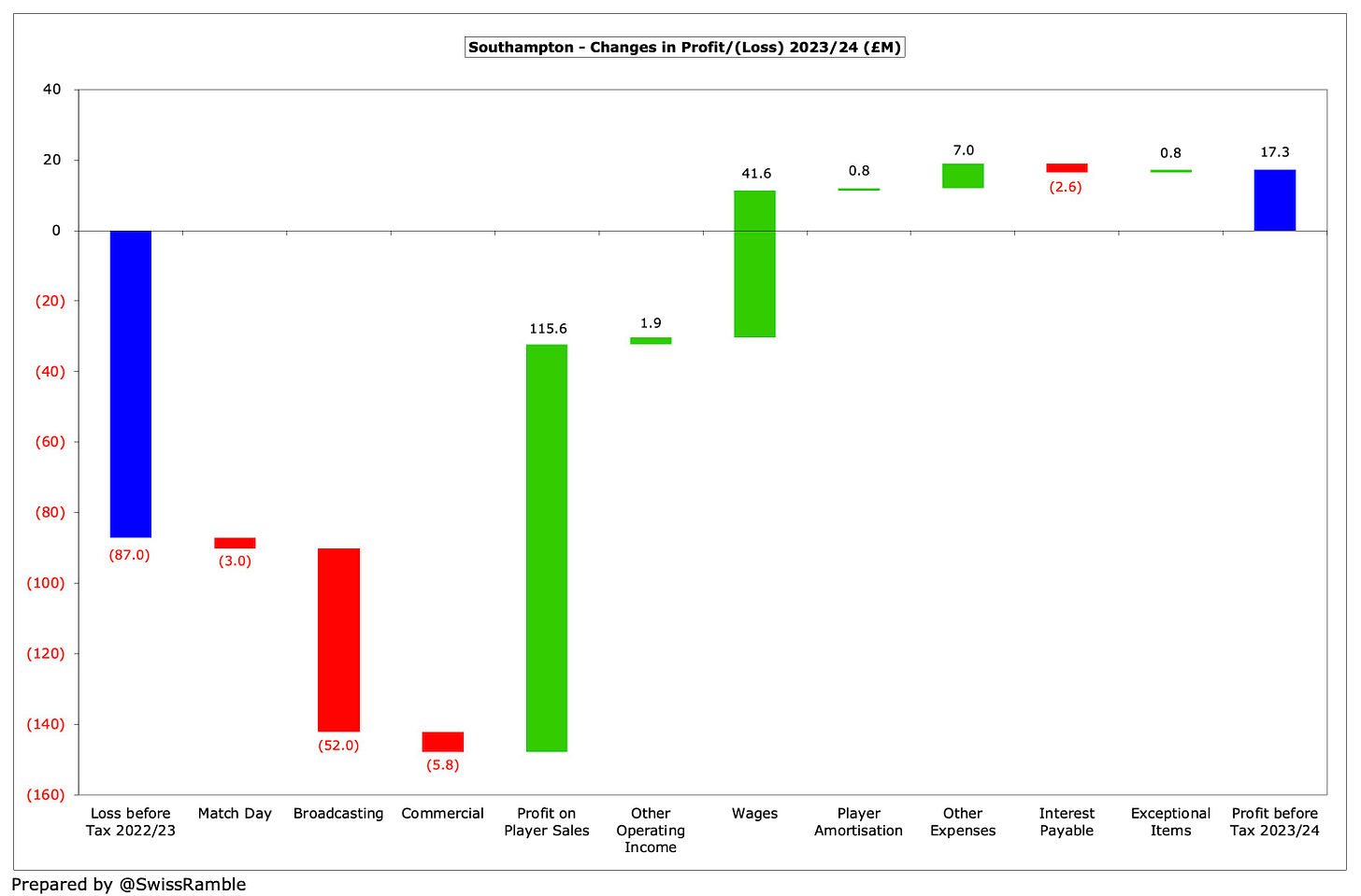By any standards, this has been an awful season for Southampton, whose relegation back to the Championship was confirmed with seven games still to play, the earliest in Premier League history.
As another sign of the club’s issues, they have had no fewer than three managers during this ill-fated campaign. In December they took “the difficult decision to part ways” with Russell Martin, who had led the Saints to promotion the previous season.
However, his replacement, Ivan Juric, fared no better, so the Croatian exited stage left after just 107 days in the hot seat, leaving first team coach Simon Rusk to take charge until the end of the season.
League Position
Before they went down in 2022/23, Southampton had long been held up as an example of a club punching above its weight, spending 11 years in the top flight, which included finishing in the top eight four seasons in a row between 2013/14 and 2016/17.
Ownership
The relegation in 2022/23 took place in the first full season under the control of Serbian media mogul Dragan Solak, who bought 80% of the club for £100m in January 2022 via his investment vehicle Sport Republic Limited.
However, the rot had already started to set in after Chinese businessman Gao Jisheng acquired a majority stake in 2017, with Katharina Liebherr retaining the remaining 20%.
Change
There has been a huge amount of change since Solak’s arrival, as the club is now on its sixth manager in just over three years, having previously dismissed Ralph Hasenhüttl in November 2022, Nathan Jones in February 2023 and Ruben Selles in May 2023, before this season’s trio.
One of the most untimely losses off the pitch was director of football, Jason Wilcox, who was poached by Manchester United towards the end of the promotion winning season, leaving the club’s recruitment plans in disarray. As Solak admitted, “When Jason left, he was not properly replaced.”
Sport Republic have attempted to fill the gap with the appointment of Johannes Spors as sporting director, after the German performed a similar role at troubled investment company, 777 Partners.
On the other hand, Henrik Kraft stepped down from his position as club chairman this January, with Solak taking on that role in addition to his other responsibilities.
Promotion
This season’s desperate performances were in stark contrast to the previous year, which the club described as “successful with the first team bouncing back from relegation to the Championship”.
The Saints finished fourth, thus securing a place in the play-offs, then proceeded to defeat Leeds United in the final. The club also reached the fifth round of the FA Cup before losing to Liverpool.
The accounts for that 2023/24 season are obviously now a year out-of-date, but they do provide a good indication of what will face Southampton after this latest relegation.
Profit/(Loss) 2023/24
Despite playing in a lower division, Southampton swung from an £87m pre-tax loss to a £17m profit, an improvement of £104m in the bottom line. However, this was entirely driven by profit from player sales, which shot up from £7m to £123m, as many players left for greener pastures.
Revenue dropped £61m (42%) from £146m to £85m following relegation, though this was largely offset by a steep reduction in operating expenses, which fell £50m (22%) from £224m to £174m. However, net interest payable increased from £17m to £19m.
Profit after tax was a fair bit smaller at £6m, due to an £11m tax charge.
The main driver of Southampton’s £61m revenue decrease was broadcasting, which nearly halved, falling by £52m from £108m to £56m, as this is “significantly lower in the Championship than the Premier League”.
The other revenue streams were also down as a result of relegation with commercial falling by nearly a third from £18.4m to £12.6m, while match day decreased £3.0m (15%) from £19.2m to £16.2m.
On the other hand, other operating income increased from £0.3m to £2.2m.
Southampton largely compensated for the lower revenue with a steep reduction in the wage bill, which was cut by £41m (34%) from £122m to £81m, though player amortisation only fell £1m (2%) from £52m to £51m. Other expenses decreased £7m (16%) from £45m to £38m.
Thanks to their “successful player trading”, Southampton actually had the highest pre-tax profit in last season’s Championship with £17.3m, ahead of Watford £12.8m, Coventry City £8.7m and Blackburn Rovers £3.3m.
Keep reading with a 7-day free trial
Subscribe to The Swiss Ramble to keep reading this post and get 7 days of free access to the full post archives.







